Embattled buses - the ups and downs of an election staple
- Published
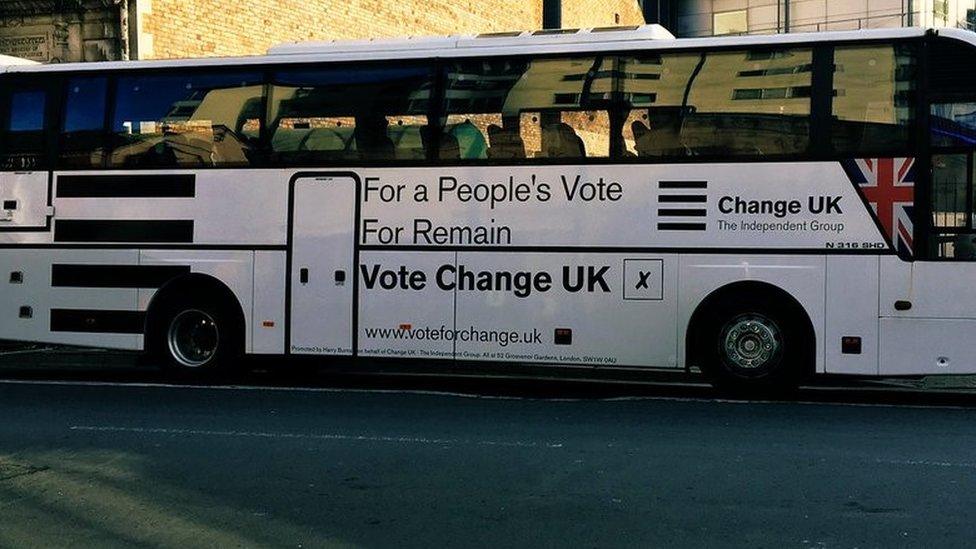
Change UK's bus has been described as a throwback to the 1980s
The arrival of Change UK's battle bus on the European election trail has attracted a flurry of comment - and quite a bit of scorn - on social media.
Critics have likened the vehicle to a package holiday coach from the 1980s and made fun of its somewhat clunky, black and white styling.
The prominence of its striped logo, which resembles a barcode, has led some to joke that the party has used Microsoft Word or Photoshop as a design template.
On a practical level, others have suggested the Union Jack is upside down.
No lesser an expert than the BBC's Andrew Neil has suggested it is the "worst example" of political messaging he has seen in ages - and he can remember pretty much all of them.

Allow X content?
This article contains content provided by X. We ask for your permission before anything is loaded, as they may be using cookies and other technologies. You may want to read X’s cookie policy, external and privacy policy, external before accepting. To view this content choose ‘accept and continue’.

Allow X content?
This article contains content provided by X. We ask for your permission before anything is loaded, as they may be using cookies and other technologies. You may want to read X’s cookie policy, external and privacy policy, external before accepting. To view this content choose ‘accept and continue’.

But, if it's any consolation to the new party, their vehicle joins an honourable tradition of battle buses that have been ridiculed for one reason or other.
The colourful
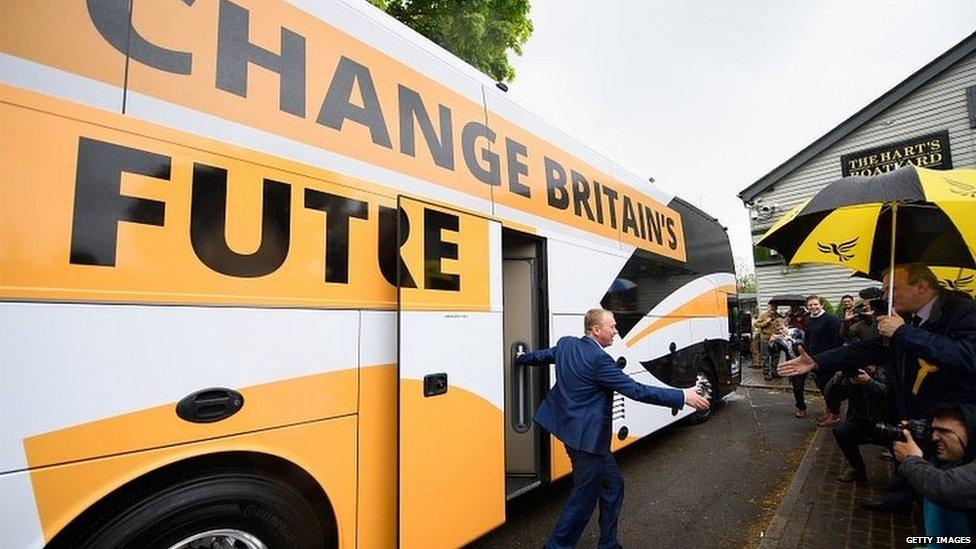
Everyone could see the Lib Dem battle bus coming in 2017
When it comes to the livery of a political bus, it has often been a case of the brighter the better.
After all, when you roll into a town for a few hours before moving off somewhere else, it pays to get noticed.
The Lib Dems, with their stand-out yellow imagery, have often set the tone - as their suitably lurid 2017 election version proved.
The yellow, black and white colours could have been a tribute to Arsenal's infamous away strip from the early 1990s.
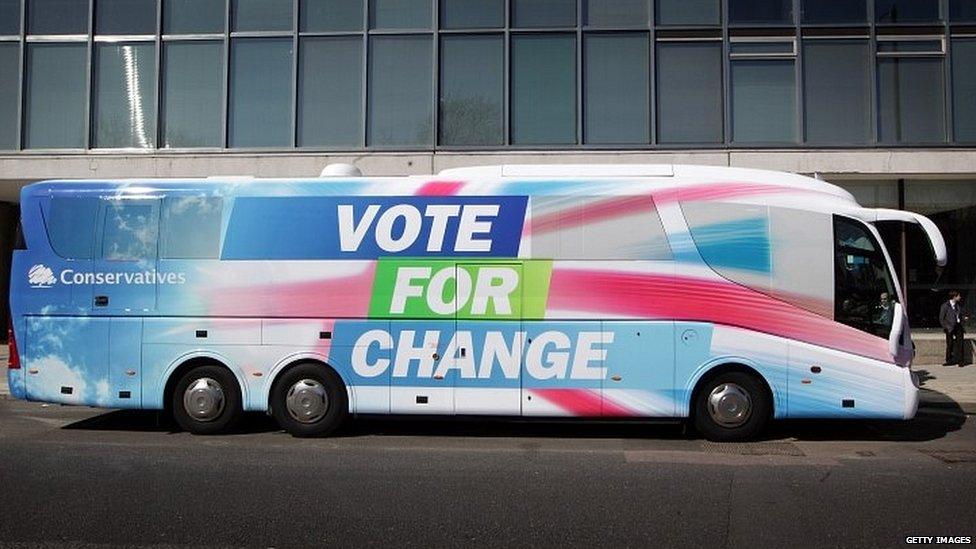
This bus did not win enough votes to give David Cameron a majority
The Conservatives have historically been more muted, although they broke with tradition in 2010 when they voted for change themselves in their choice of colour.
Beauty is in the eye of the beholder, of course.
To some, the above could be stylised depiction of the Union Jack; to others, it's more like an advertisement for a certain brand of toothpaste.
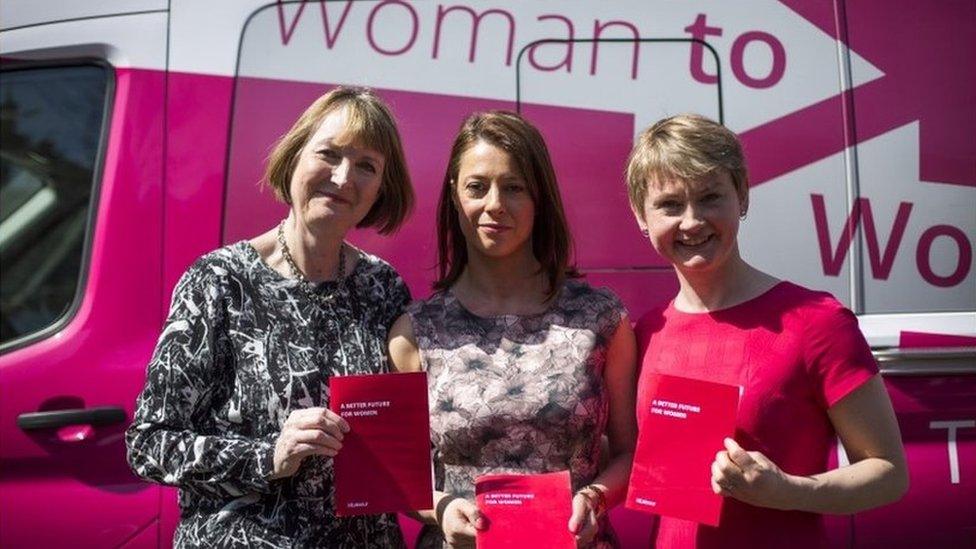
The future's so bright

But Labour returned to a traditional colour palette two years later
Labour's 2017 model was a deep red vintage, which some interpreted as a return to traditional socialist values after more indeterminate offerings.
But it certainly didn't attract as much attention as the party's 2015 Woman to Woman minibus.
Everyone could agree on the cause behind Harriet Harman's initiative - an attempt to boost turnout among female voters.
But there was less consensus about the choice of pink for the vehicle. Some felt it was "patronising" and "sexist", but Ms Harman insisted it was simply "eye-catching".
The personal
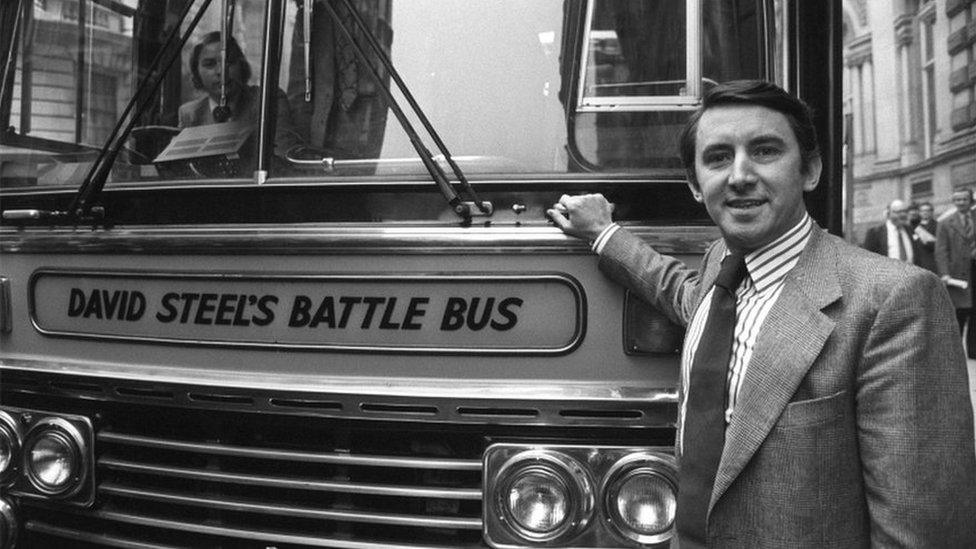
David Steel's bus had all the latest mod-cons in 1979
British politics may have become more presidential over the years, but battle buses have always had a personalised feel to them.
Liberal leader David Steel has his own eponymous vehicle in the 1979 election campaign, complete with two TV sets, an electric typewriter and photocopier, and coffee-making facility, as well as its own washroom.
Tony Blair and Gordon Brown occasionally shared a bus during the 1997 and 2001 campaigns although, by 2005, this had become politically impossible.
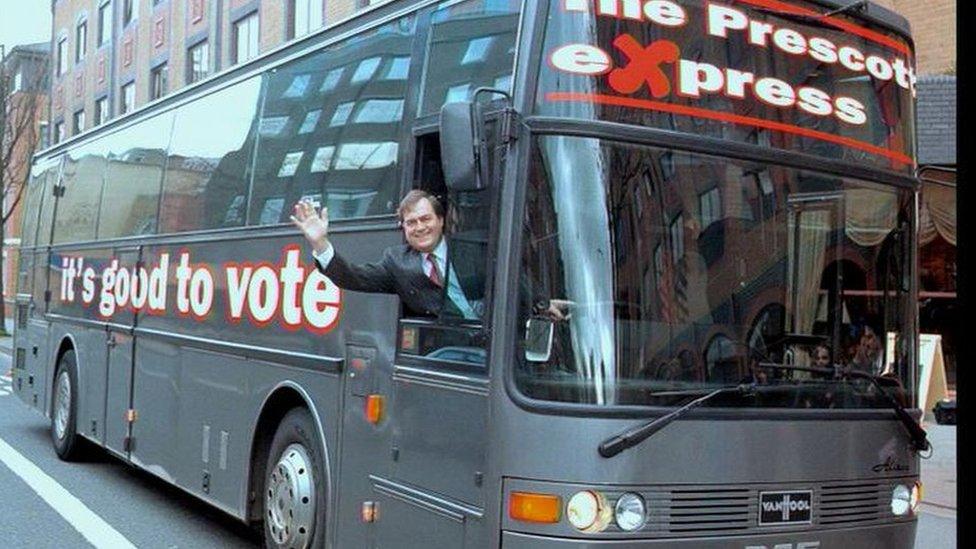
John Prescott spent much of the 1997 campaign on the road
But it's not only party leaders who have had the privilege of their own transport.
Who can forget the Prescott Express from the 2001 election? Labour's then deputy leader John Prescott will certainly not forget his visit to Rhyl during that campaign - which ended with perhaps the most famous punch-up in UK political history., external
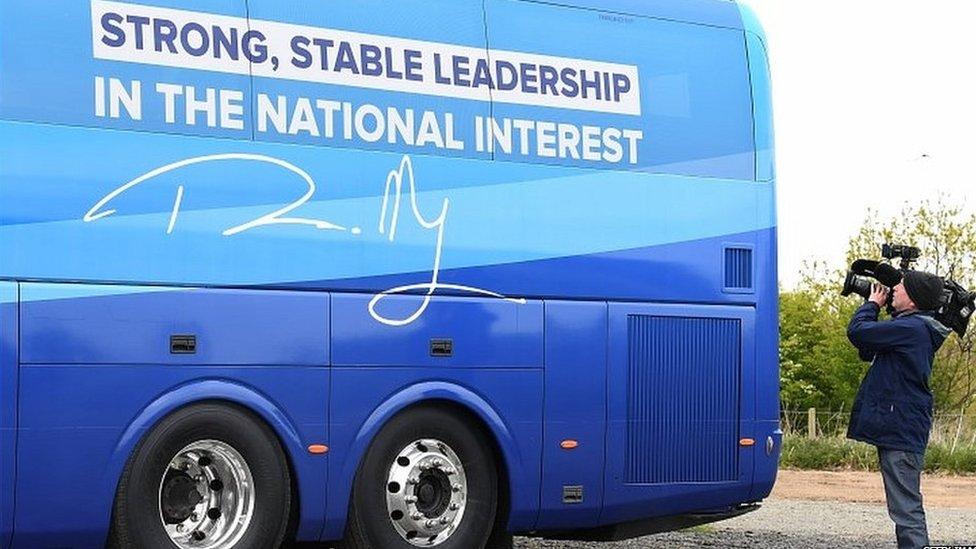
A signature has become the sign of political authenticity - but for how much longer?
The Conservatives took the personal to a new level in 2017 when there was scarcely a mention of the party itself on the bus.
Instead, it was emblazoned with the message "Theresa May for Britain" and her promise of "strong and stable leadership".
Should anyone have been in any doubt about the PM's sincerity, her signature also appeared on the side.
This extra personal touch was first pioneered by David Cameron in 2015.
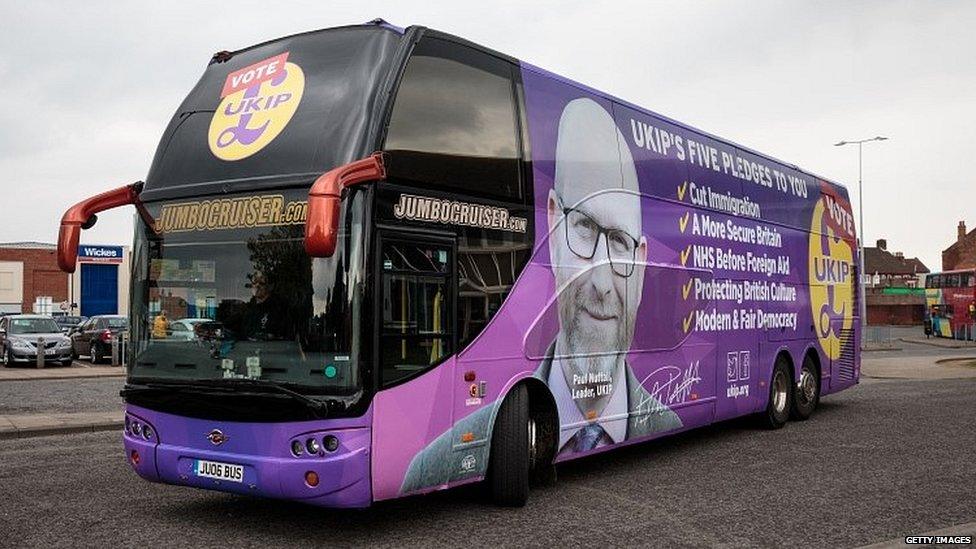
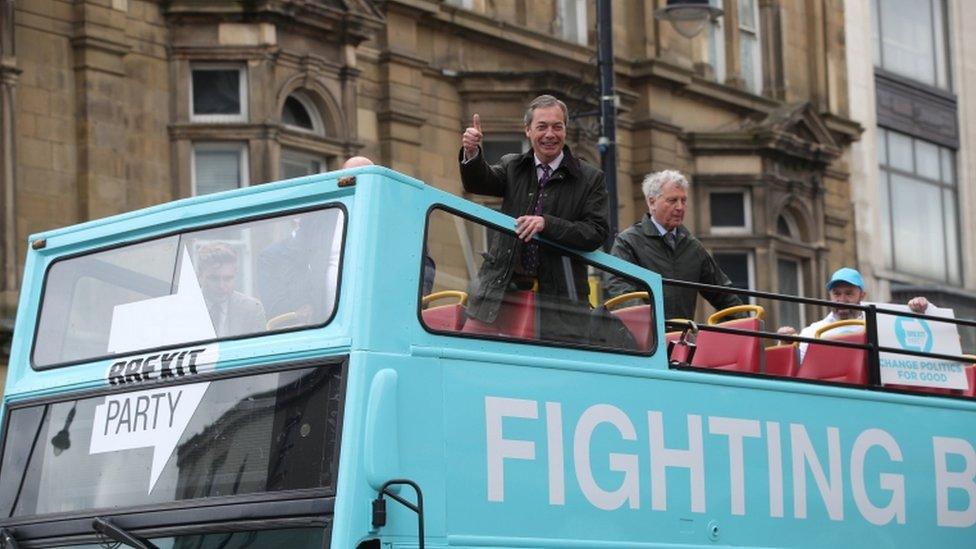
UKIP took this a step further in 2017 when it found room to include a signature and a full-size image of its leader Paul Nuttall on its bus, as well as the party's logo and key pledges.
Critics suggested this visual overload was an attempt to address Mr Nuttall's lack of name recognition compared with his predecessor Nigel Farage.
In the current European election campaign, Mr Farage has cut out the middle man - and indeed, the roof - by making himself ultra-visible in an open-top bus. The colour is the fetching baby blue of newcomer The Brexit Party.
The controversial
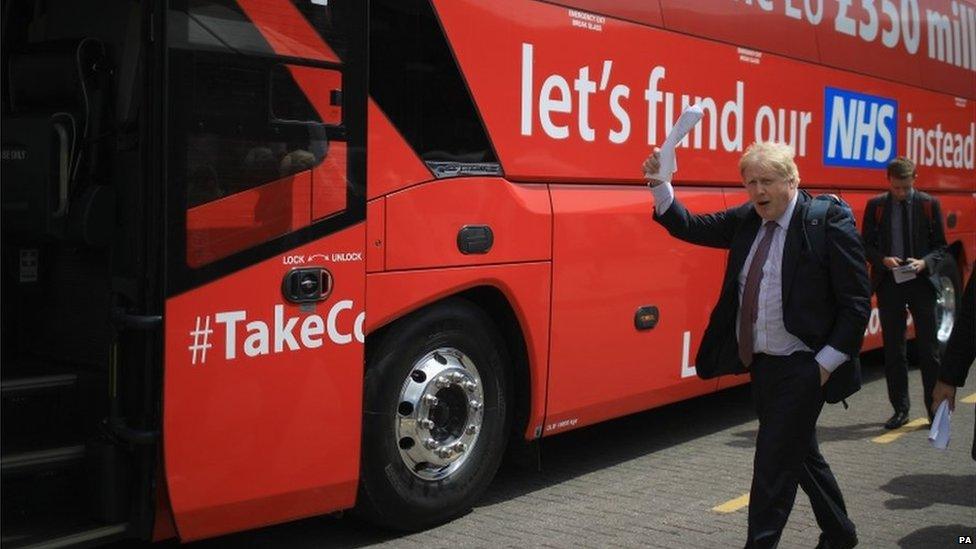
Vote Leave's battle bus was the most controversial feature of the 2016 referendum
Once upon a time, battle buses were relatively innocent things - as much about logistics as political messaging.
Even in the 1990s, the sloganeering was relatively low-key, as you can see from Labour's "Leading for Britain" logo.
That all changed with the 2016 referendum.
The Vote Leave battle bus, with its claim that the NHS was in line for a £350m weekly windfall from Brexit, took campaigning to a new level.
It remains one of the most talked-about and disputed images - and pledges - in British political history.
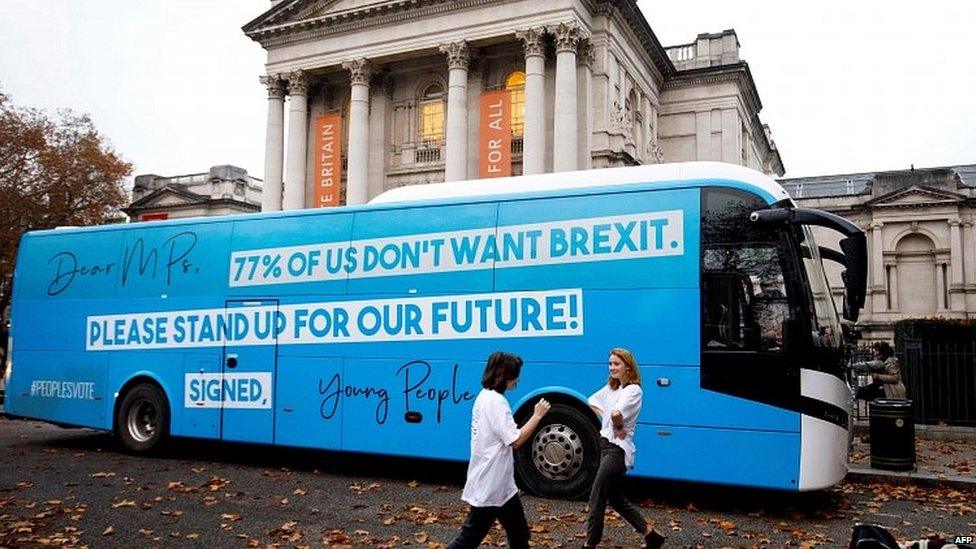
Buses are now billboards for both sides of the Brexit debate
For better or worse, battle buses now have more in common with sleek moving billboards than the trudging workhorses of yesteryear.
Both sides of the Brexit debate have been deploying them with intent in Westminster in the past few months.
In this age of increasingly digital campaigning, this rather old-fashioned trend seems to have a lot of life in it yet.